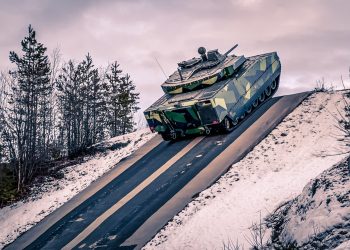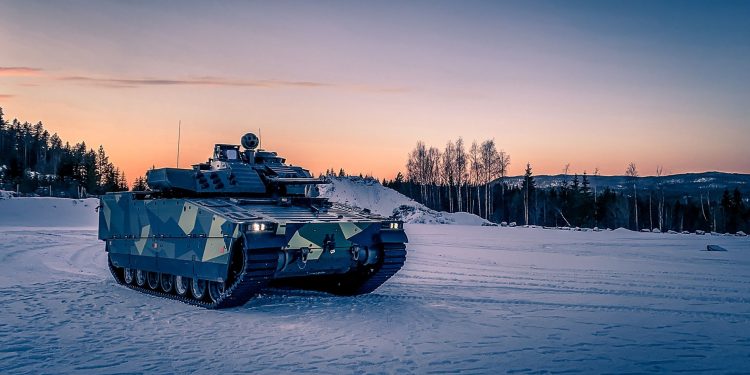Every year BAE Systems hosts representatives from the group of nations who operate the CV90 to share information that helps continuously evolve the Infantry Fighting Vehicle’s capabilities as an advanced and affordable combat vehicle.
They are known as members of the CV90 Club and they come from all over Europe. The topics discussed are broad and in-depth. It might be about a missile, smoothness of ride, or battlefield situational awareness. New technologies can also be a focus. So can shared experiences.
The CV90 Club represents the seven countries that operate the CV90 Infantry Fighting Vehicle. Some are part of NATO, others are not. But they take part in two days of intense yet collaborative meetings with one common goal: Working together to help make the CV90 family of vehicles continuously better for warfighters.” This could be anything from cost effectively adding new capabilities for addressing emerging threats and requirements, or ways to pool resources to support lifecycle sustainment like upgrades and spares.
“The openness within the community is striking and this to the benefit of all users,” said Dan Lindell, director of combat vehicles at BAE Systems Hägglunds. “It also benefits us. We get valuable feedback and insight into the day-to-day operations of the CV90 and their crews in a proactive and professional way, which is really important. These meetings are always one of the highlights of my year because they are an opportunity for us to get better too.”
This year’s annual meeting took place earlier this month in Örnsköldsvik, Sweden, where BAE Systems manufactures the CV90. The current users of the CV90 are Denmark, Estonia, Finland, the Netherlands, Norway, Sweden and Switzerland.
The value the CV90 Club and its System Development Board (SDB) bring is not hard to grasp. They simply share the collective knowledge of first-hand experience of actively operating and maintaining the Infantry Fighting Vehicles. Sharing this knowledge in this forum benefits all of the user nations in terms of optimizing CV90 operations while also helping BAE Systems enhance the vehicle’s capabilities over time.

This approach takes full advantage of the CV90’s modular systems architecture that gives it the flexibility and adaptability needed to cost-effectively add new technologies and capabilities as seamlessly as possible. There are 15 variants of the CV90.
One of the most valuable innovations that arose from these meetings was deploying the vehicles on rubber tracks reducing vibrations and consequently improving reliability and crew comfort. The group studied the potential and helped implement the rubber track system now fielded on the Norwegian Army’s version of the vehicle, and the idea has drawn a great deal of interest from other nations.
”The recurring SDB meetings are a vital function within the CV90 Club’s activities, and help pave the way for continuous development of the CV90 vehicle family to push the limit of the technological edge for combat vehicles,” said Ola Almesjö, the CV90 Club’s chairman. “The SDB enables a converging force that outline the member states strivings and development needs and the latest technology achievements.”
A big topic this year was the integration and test firing of an anti-tank-guided missile over the winter using a Rafael Advanced Defense Systems SPIKE-LR for the first time late last year, adding yet another lethal capability to the vehicle’s highly diversified mission sets. This demonstration was welcomed by the group and could lead CV90 operators to add the capability in the years ahead. In addition the modularity of the CV90 was discussed and a walk-though of the wide range of CV90 specialist vehicles was presented. The CV90 is more than an IFV and the strength of variants provides the power of combined arms for current and future users.
Heading back home
CV90 Club representatives return home once the meetings conclude with new knowledge about the vehicle they operate, gained through the openness of their counterparts. This can lead to new ideas for operations or tactics. It also opens the possibility of partnering with other CV90 user nations to develop new methods and capabilities together.
“I always go home with something to share with my colleagues,” said Rune Hellerud, Fleet Manager CV90, Norwegian Defence Material Agency.











